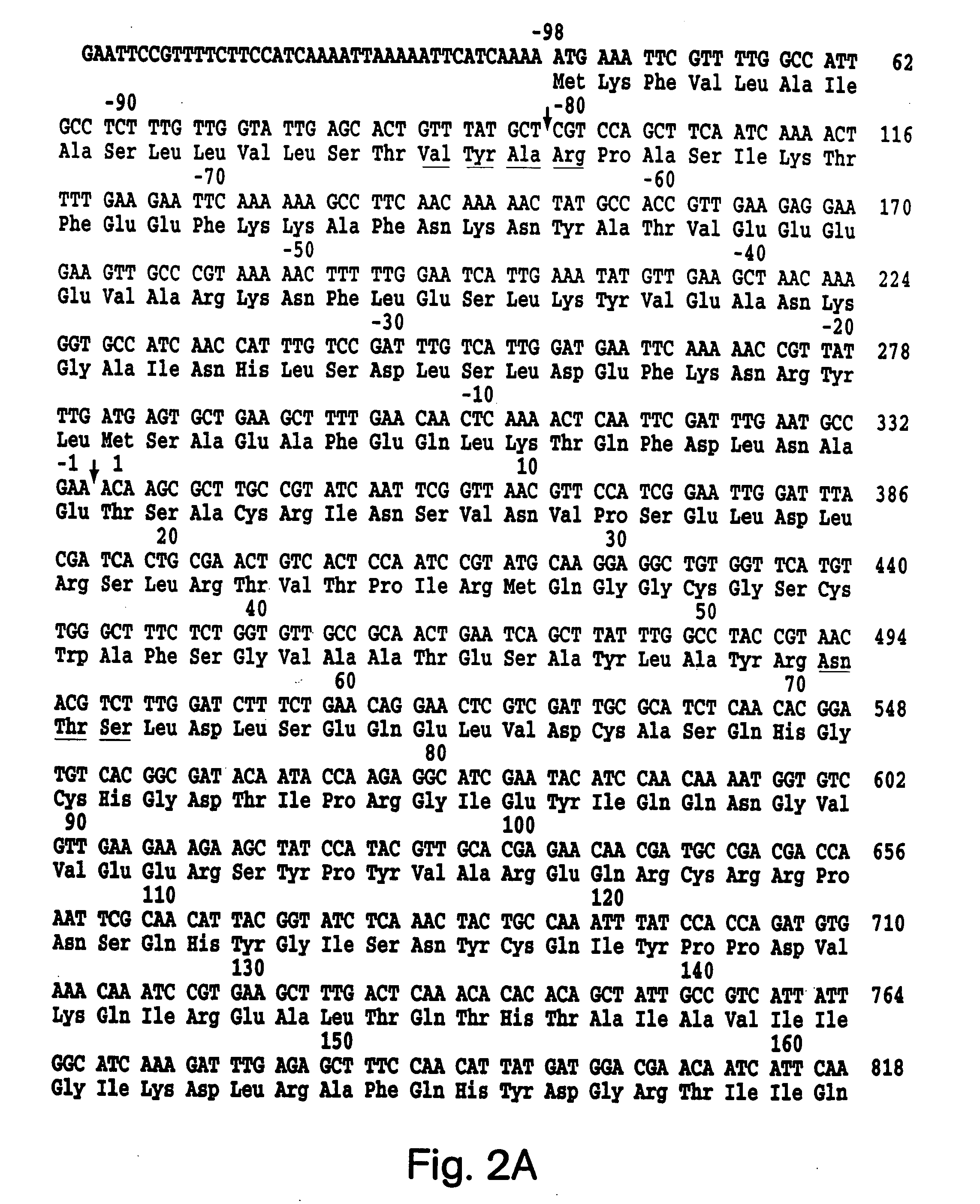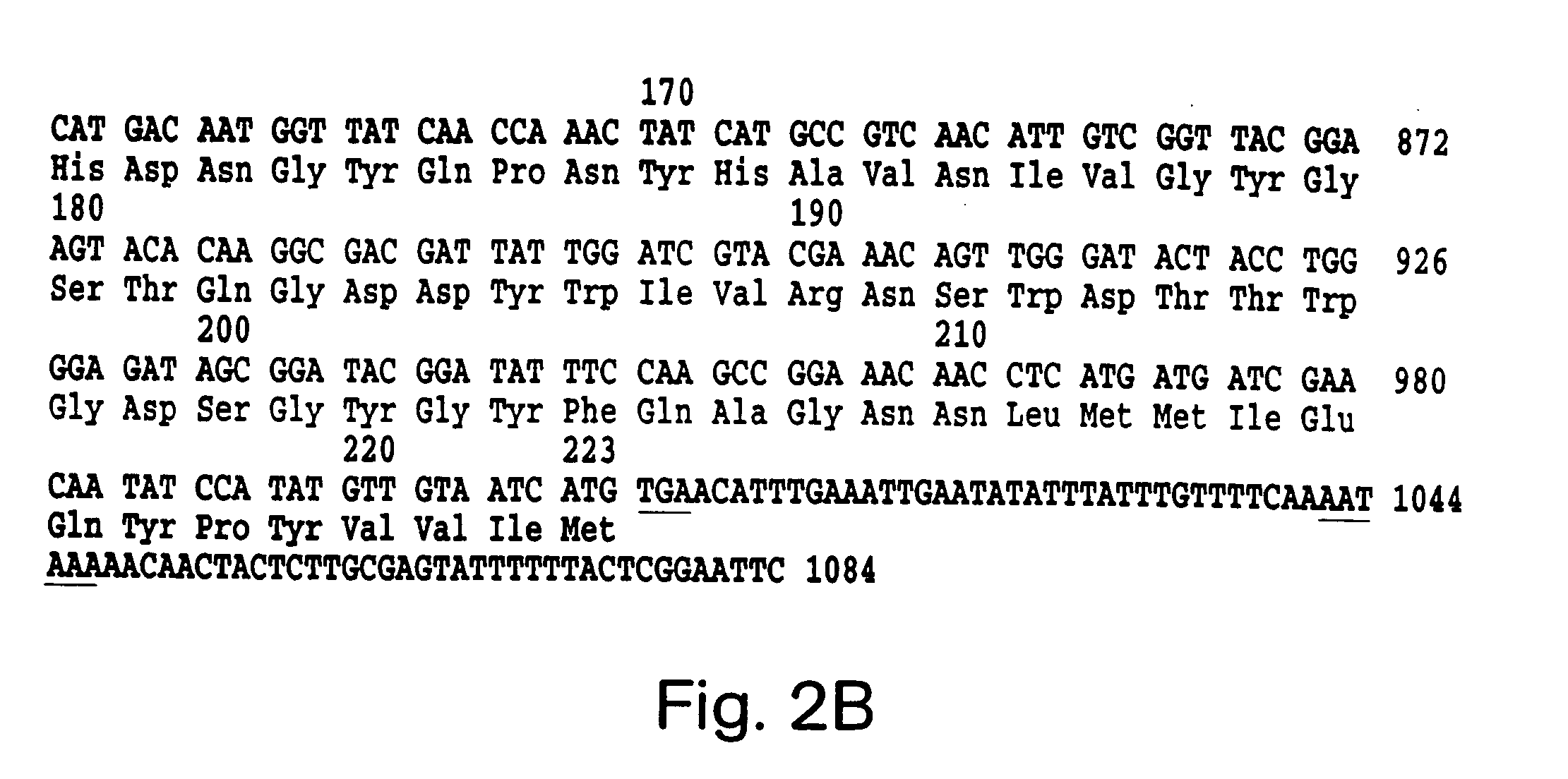Cloning and sequencing of allergens of dermatophagoides (house dust mite)
a technology of dermatophagoides and allergens, which is applied in the field of cloning and sequencing of allergens of dermatophagoides (house dust mites), can solve the problems of considerable effort and achieve the effect of desensitizing the individual and reducing sensitivity or desensitizing
- Summary
- Abstract
- Description
- Claims
- Application Information
AI Technical Summary
Benefits of technology
Problems solved by technology
Method used
Image
Examples
example 1
Isolation and Characterization of cDNA Coding for Der f I
Materials and Methods
Dermatophagoides Farinae Culture
[0046] Mites were purchased from Commonwealth Serum Laboratories, Parkville, Australia.
Construction of the D. farinae cDNA λgt11 Library
[0047] Polyadenylated mRNA was isolated from live D. farinae mites and cDNA was synthesized by the RNase H method (Gubler, V. and B. J. Hoffman, Gene, 25:263-269 (1983)) using a kit (Amersham International, Bucks.). After the addition of EcoRI linkers (New England Biolabs, Beverly, Mass.) the cDNA was ligated to alkaline phosphatase treated λgt11 arms (Promega, Madison, Wis.). The ligated DNA was packaged and plated in E. coli Y1090 (r-) to produce a library of 2×104 recombinants.
Isolation of Der f I cDNA Clones from the D. farinae cDNA λgt11 Library
[0048] Screening of the library was performed by hybridization with two probes comprising the two Der p I cDNA BamHI fragments 1-348 and 349-857 generated by BamHI digestion of a deri...
example 2
Isolation and Characterization of cDNA Coding for Der f II
Materials and Methods
Preparation of λgt11 D. farinae cDNA Ligations
[0059] D. farinae was purchased from Commonwealth Serum Laboratories, Parkville, Australia, and used to prepare mRNA (polyadenylated RNA) as described (Stewart, G. A. and W. R. Thomas, Int. Arch. Allergy Appl Immunol., 83:384-389 (1987)). The mRNA was suspended at approximately 0.5 μg / μl and 5 μg used to prepare cDNA by the RNase H method. (Gubler, U. and Hoffman, B. J., Gene. 25:263-269 (1983)) using a kit (Amersham International, Bucks). EcoRI linkers (Amersham, GGAATTCC) were attached according to the method described by Huynh et al., Constructing and screening cDNA libraries in gt10 and gt11, In: Glover, DNA Cloning vol. A practical approach pp. 47-78 IRL Press, Oxford (1985)). The DNA was then digested with EcoRI and recovered from an agarose gel purification by electrophoresis into a DEAE membrane (Schleicher and Schue...
PUM
 Login to View More
Login to View More Abstract
Description
Claims
Application Information
 Login to View More
Login to View More - R&D
- Intellectual Property
- Life Sciences
- Materials
- Tech Scout
- Unparalleled Data Quality
- Higher Quality Content
- 60% Fewer Hallucinations
Browse by: Latest US Patents, China's latest patents, Technical Efficacy Thesaurus, Application Domain, Technology Topic, Popular Technical Reports.
© 2025 PatSnap. All rights reserved.Legal|Privacy policy|Modern Slavery Act Transparency Statement|Sitemap|About US| Contact US: help@patsnap.com



